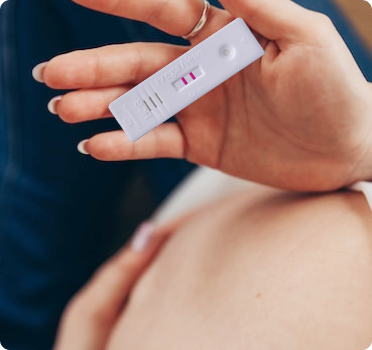Pregnancy is a time of significant change, both physically and emotionally. One of the most fascinating aspects of pregnancy is how it affects your metabolism. As your body adjusts to support the growing life within, you may notice fluctuations in your energy levels, appetite, and weight gain. Understanding the metabolic changes during pregnancy and learning how to boost your metabolism can help you maintain a healthy lifestyle throughout this special time.
What is Metabolism?
Metabolism refers to the chemical processes in your body that convert the food you eat into energy. This energy is vital for everything your body does—from breathing and circulating blood to growing a baby during pregnancy. Your metabolism is controlled by your thyroid gland, and it operates through two main functions: catabolism (breaking down molecules to produce energy) and anabolism (building up molecules to store energy).
In pregnancy, your body requires more energy, which leads to changes in metabolism to support the baby’s development. These metabolic changes during pregnancy often result in increased calorie needs, but the rate of metabolism can vary depending on different factors.
Difference Between Fast and Slow Metabolism
Metabolism can be categorized as fast or slow, depending on how quickly your body processes food and burns calories.
- Fast metabolism: This means your body burns calories quickly, even when you’re at rest. People with fast metabolism tend to maintain a stable weight, find it easier to stay lean and may need to consume more calories to sustain energy levels.
- Slow metabolism: A slow metabolism processes calories more slowly, meaning fewer calories are burned at rest. This can lead to weight gain, fatigue, and difficulty in losing weight.
During pregnancy, some women experience a natural increase in metabolism, while others may struggle with a slower metabolic rate. The key to maintaining a balanced weight and energy level is understanding how pregnancy and metabolism interact.
Does Metabolism Speed Up During Pregnancy?
Yes, for most women, metabolism does speed up during pregnancy. As your body works to nourish your baby, it requires extra calories to meet the demands of both you and the baby. This increase in calorie needs causes your metabolism to rise, particularly in the second and third trimesters.
Your body becomes more efficient in converting nutrients from food into energy that’s shared between you and the baby. This can make it easier to manage weight during pregnancy, but only if paired with a balanced diet and regular exercise.
Tips to Boost Metabolism During Pregnancy
While pregnancy naturally speeds up metabolism to some degree, there are several ways to increase metabolism during pregnancy even further to maintain healthy energy levels and support your baby’s development.
1. Stay Active
Exercise is one of the most effective ways to boost metabolism. Low-impact activities like walking, swimming, and prenatal yoga help improve circulation, enhance muscle tone, and increase calorie burn. Exercise also helps in managing weight gain during pregnancy.
2. Eat Small, Frequent Meals
Eating smaller meals more frequently throughout the day can help keep your metabolism active. Instead of three large meals, try to eat five to six smaller ones to provide your body with a steady flow of energy.
3. Hydrate
Staying hydrated is crucial for maintaining a healthy metabolism. Drinking water helps your body process calories more efficiently, and dehydration can cause your metabolism to slow down. Aim for at least eight glasses of water a day, and consider adding water-rich fruits and vegetables like cucumber and watermelon to your diet.
4. Include Protein-Rich Foods
Protein has a higher thermic effect than fats or carbohydrates, meaning your body burns more calories digesting it. Including lean proteins like chicken, turkey, eggs, and plant-based sources like beans and tofu can give your metabolism a significant boost.
5. Get Plenty of Sleep
Lack of sleep can negatively affect your metabolism, leading to weight gain and reduced energy levels. Ensure you get enough rest each night to support metabolic function. Try to aim for 7-9 hours of sleep, and consider naps during the day if necessary.
6. Avoid Processed Foods
Processed foods are often loaded with sugars and unhealthy fats, which can slow down your metabolism and lead to excessive weight gain. Instead, focus on whole foods such as fruits, vegetables, whole grains, and lean proteins to keep your metabolism functioning optimally.
7. Manage Stress
High-stress levels can cause hormonal imbalances that may affect your metabolism. Activities like meditation, deep breathing, and spending time in nature can help reduce stress and support healthy metabolic function.
Conclusion
Understanding pregnancy metabolism and the metabolic changes during pregnancy is crucial for maintaining a healthy body and ensuring your baby gets the nutrients they need. By staying active, eating a balanced diet, and taking care of your mental health, you can help regulate your metabolism and support a healthier pregnancy.
FAQs
What affects metabolism in pregnancy?
Several factors can affect metabolism during pregnancy, including hormonal changes, increased calorie needs, activity levels, and overall health. As your body works to support your baby, these factors naturally raise your metabolic rate.
How can I have a healthy metabolism?
To maintain a healthy metabolism during pregnancy, stay active with low-impact exercises, eat a nutrient-rich diet, hydrate regularly, and manage stress. Getting adequate rest is also essential for supporting your metabolism.
Which foods increase metabolism?
Foods that can help boost metabolism include protein-rich foods like lean meats, fish, eggs, and plant-based proteins. Whole grains, water-rich fruits and vegetables, and foods rich in fiber also support a healthy metabolism.






































